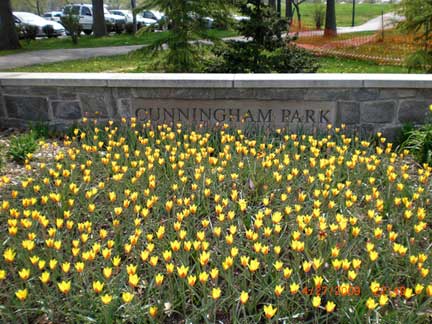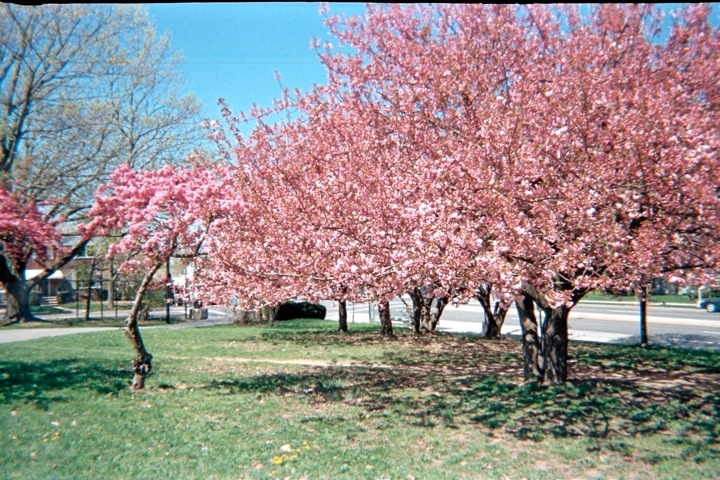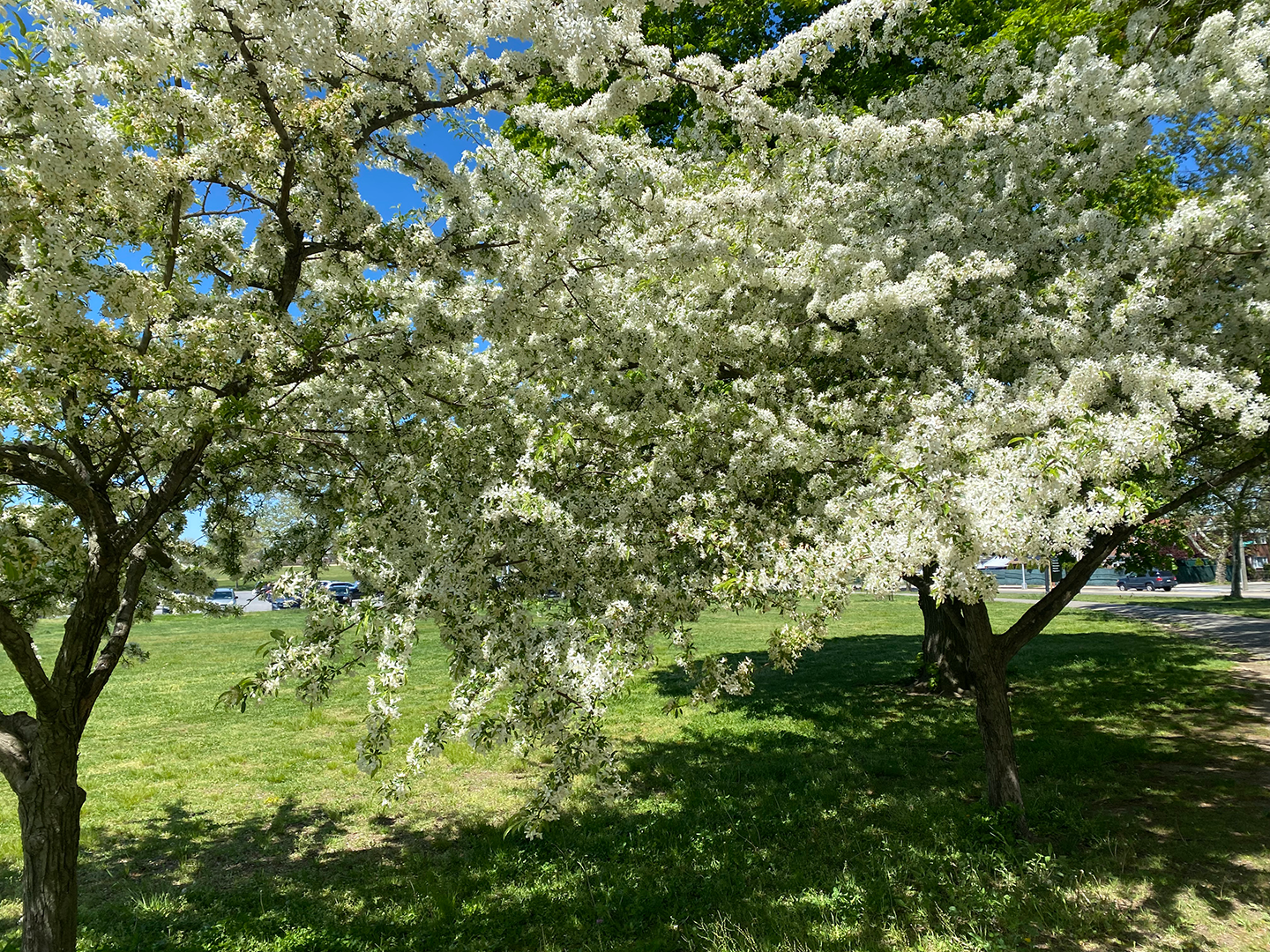Cunningham Park is a premier example of the vibrant force of nature within an urban setting. Despite the proximity of three major highways (the Long Island Expressway, the Grand Central Parkway and the Clearview Expressway), more than two-thirds of the park remains undeveloped natural land, lush with greenery and wildlife. Within yards of speeding cars, mallard ducks settle down for the night on centuries old glacial kettle ponds, and ancient oaks stand sentinel over ball fields loud with the cheers of future Yankees and Mets.
Red oaks, flowering dogwoods, tulip trees, red maples, sweet gums and hemlocks are plentiful in Cunningham Park’s Southern Forest. Similar to the forest found by early settlers, it also contains black cherry, hickory and sassafras, in addition to ferns and flowers such as geraniums, buttercups and violets that bloom on the forest floor. Several kettle ponds dot the area. Summer visitors may notice pepperbush or maple leaf around the edges of a pond where mallard and black ducks feast on duckweed. Most of the trees in the Northern Forest are younger than those in the southern section, and visitors may notice the remnants of farms in old stone walkways and walls. Black oak, black cherry and black locust trees abound in this forest, along with flowers such as wild sarsaparilla, bellwort and star-of-Bethlehem. Late in the summer, jewelweed, also known as “touch-me-not,” puts out its distinctive orange flowers. Squirrels, chipmunks and cottontail rabbits may scurry by, and hawks have been sighted.










